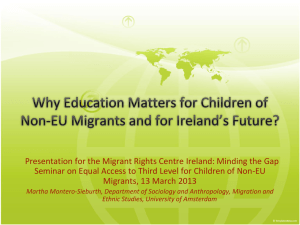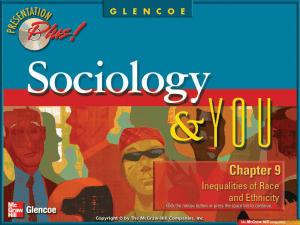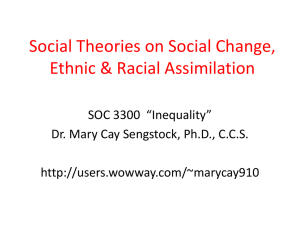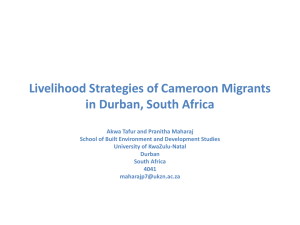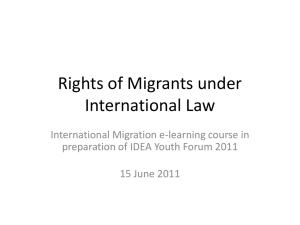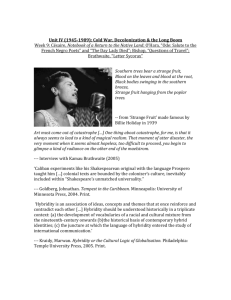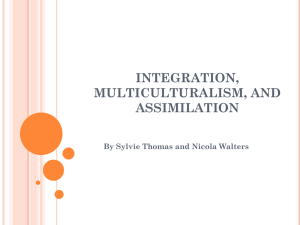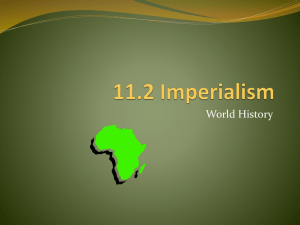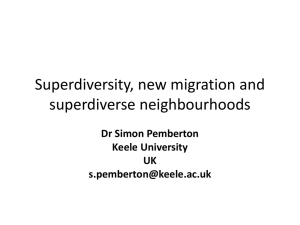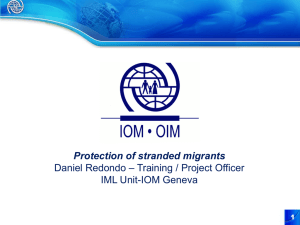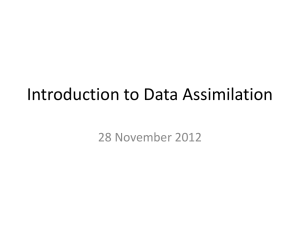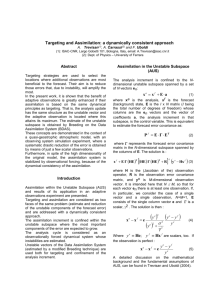Ch 8 Migrant-host relationships
advertisement
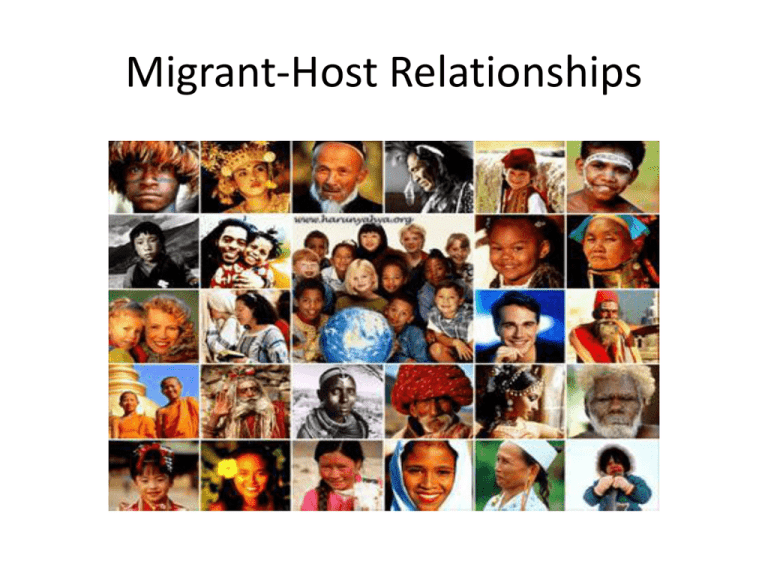
Migrant-Host Relationships Migrant-Host Relationships • The relationships between immigrants and their hosts are very complex, and understanding these relationships requires dialectical approach. • The two major reasons for migration involve economic and/or noneconomic reasons and complex push-pull (dialectical)factors. • The host may cause the immigrants to feel simultaneously accepted and rejected, privileged and disadvantaged, and relationships may be both active and motionless. • There are five types of relationships that structures relationship of migrants and host and their attitude toward each other’s cultures, assimilation, separation, integration, marginalization, and culture hybridity. Migrant-Host Relationships Migrants Devalue Own/Minority Culture Migrants Value Host/ Majority Culture Migrants Devalue Host/Majority Culture Assimilation Marginalization Hybridity Migrants Value Own/Minority Culture Integration Separation Assimilation Assimilation is a type of cultural adaptation in which an individual gives up his or her own cultural heritage and adopts the mainstream culture identity. Melting pot archetypal. Central focus is not on retaining one’s cultural heritage. Assimilation can be caused by ethnic and/or racial discrimination, society’s pressure, maintaining relationships with other groups in the new culture. “…assimilation and melting-pot ideologies: we permit members of other cultures to immigrate, but require they adopt some (melting pot) or all (strict assimilation) features of our cultural template, in any event the central ones of individual autonomy and freedom” (Bennett, 2011). Separation • There are two forms of separation. • The first form is separation which is a type of cultural adaptation in which an individual retains his or her original culture while interacting minimally with other groups. • Many strict religious groups actively resist the influence of dominant society, such as Amish, Muslim, Buddhism, and Mormon. • In this picture these Indian women are learning English but keeping their own culture identity. Segregation The second form of separation. Segregation is the policy or practice of compelling groups to live apart from each other. This picture represents the segregation on a bus when white people sat in the front and African Americans sat in the back. This was a forced segregation. Integration • Integration occurs when migrants have an interest both in maintaining their original culture and language and in having daily interactions with other groups. • In this picture two people with two different cultures joined together to create a family that will be able to maintain the culture and language of both parents. Marginalization • Marginalization occurs when individuals or groups express little interest in maintaining cultural ties with either the dominant culture or the migrant culture. • “As Asian Americans are living within two cultures, they may find themselves ‘on the margins of each but a member of neither’”(Kim, 2006). Cultural Hybridity • Cultural hybridity occurs when migrants often combine all four types of relating to the host society. • Cultural hybridity often occurs in employment (assimilation), bilingualism (integration), different culture marriages (seperation). • Not a melting pot society, instead each groups blends together their own culture and other cultures. Test Questions 1. True or False: Assimilation occurs when the individual does not want to maintain an isolated cultural identity but wants to maintain relationships with other groups in the new culture. 2. Marginalization occurs when a) b) c) d) Migrants have an interest both in maintaining their original culture and having daily interaction with other groups. An individual expresses little interest in maintaing cultural ties with either the dominant culture or the migrant culture. Migrants and their families combine all four types of relating to the host society. Migrants choose to retain their original culture and avoid interaction with other groups. References • Bennett, J. (2011). Assimilation & The Persistence of Culture. The New Criterion, 29(5), 29. • Kim, S.Y., Gonzales, N.A., Stroh, K., & Wang, J.J. (2006). Parent-child Cultural Marginalization and Depressive Symptoms in Asian American Family Members. Journal of Community Psychology, 34(2), 168.




